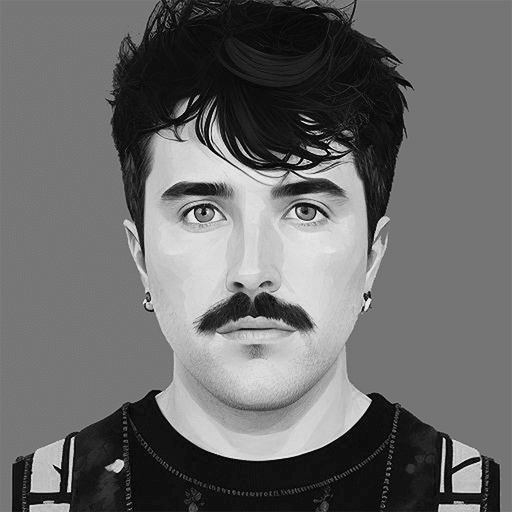At this point, it’s fair to say Bill Gates was onto something when he penned his 1996 essay titled “Content is King.” Sure, Gates might have written this piece before the age of social media, and when “following” someone had more of a negative connotation than a positive one, but today this adage still rings true. Content is incredibly powerful today, particularly for businesses and marketers.
And no aspect of content is more promising, vital, and downright challenging for brands to master than video marketing.
Before the coronavirus pandemic, studies found that year-over-year growth for digital media viewership was far outperforming expectations, and it had reached 244.4 million viewers in the US alone.
Then, the pandemic vastly accelerated this trend, as people turned to digital video in an age of WFH, masks, and quarantines. During this time, online media consumption jumped by 215% in the US.
What does this all mean for businesses, brands, and marketing departments?
It means that they likely need to tap into the power of video marketing to reach their audience, and to experience the explosive and sustainable growth they dream of.
It’s clear that video isn’t only here to stay: it’s on the rise. Researchers estimate that now, about 82% of the global internet traffic comes from streaming and downloading digital video. If brands want to reach their audience, marketing dollars are typically well-spent on video.
The question isn’t “if” brands should engage in video marketing, but how they can get it right. This can be especially tricky to navigate when a brand doesn’t have one “figurehead,” or public-facing persona. Who (or what) becomes the subject of your video marketing?
Does Our Brand Really Need Video?
Before deciding how to approach video marketing, it’s important to understand why (or if) your brand needs video. We already discussed how audiences in general are hanging out online, and are consuming tons of digital video. But there is also plenty of data that shows just how valuable video marketing is for brands.
Let’s dive into just some of the numbers. Video ads are shown to get 480% more clicks than text ads, and provide businesses with far cheaper leads. Teams that use video are shown to grow revenue almost 50% faster than marketers who don’t use video. And users spend 88% more time on websites when they have video, versus when they don’t.
Answering the question of whether or not your specific brand absolutely needs video depends on your brand, where your audience is located, and what your product is. It’s a highly personalized decision, and it leads to more questions than answers (like how to approach video marketing).
But the bottom line is that the more data we look at, the more clear the picture becomes. Most users today are not only online, but they’re consuming digital video. And this digital video can be a powerful driver of revenue for brands.
What Kinds Of Videos Are There?
Once we open the can of worms that is video marketing, there are many things to figure out. But one of the first important elements to understanding video marketing is to know the different types of videos that your brand can create.
Here are just a few of the common types of videos you can execute with video marketing.
- Brand videos: These videos typically demonstrate your brand to an audience, giving them an overall idea of what your organization does (and can include products & services, as well as goals and missions). This “Why Work With Will Reed” video by executive recruiting company Will Reed is a great example of this.
- Instructional videos: From how-to’s to other forms of teachable content, these videos are designed to educate your audience.
- Demo videos: These videos show your audience how things work, whether it’s your product as a whole, or a new feature that just launched.
- Interview videos: From thought leaders in your organization to experts in your field, interview videos use conversation to deliver high-quality information to your audience.
- Behind-the-scenes videos: These videos give views a “raw” look at what’s going on in your organization.
- Influencer/sponsored/review videos: We’ve all seen #spon before, to denote that a post is sponsored by a brand. When brands partner with influencers or affiliates, they can vastly increase their reach, quickly build trust with their audience, and boost engagement. Additionally, most B2B brands are able to benefit from customer reviews and testimonial videos.
- User generated content: User generated content, or UGC, is on the rise, and for good reason. This content is created directly by users themselves, and oftentimes, doesn’t even appear to be marketing content. UGC is often seen as authentic, trustworthy, and it is shown to positively impact purchasing decisions.
We Have No Figurehead And No One Wants To Be The Face… What Do We Do?
Sure, the idea of producing awesome and viral video marketing content is appealing. But there is usually a big question that stops brands dead in their tracks: who should actually be in the videos? For most brands, this is a tough question to answer, because they likely don’t have any one person who is the face of the brand.
When you hit this almost inevitable question, here are some options to weigh:
- You can personify an aspect of your brand
I bet you never thought a plane could have a personality. I thought the same, until I found the ridiculously viral TikTok account that belongs to budget airline Ryanair. Using low-budget features that are native to TikTok (and an excellent sense of humor), Ryanair personified their brand, and more specifically, their planes.
Another fantastic example is Duolingo, the language-learning app. This brand took their green owl mascot named Duo, and did something that was unheard of: they created an IRL suit that is worn in their office, and that is the “hero” in their marketing videos. Their videos consistently reach millions of organic viewers, and their TikTok channel audience is currently sitting at 5.4 million followers.
These examples show how you can take an element of your brand (whether it’s an object, mascot, or feature) and uniquely personify it in today’s digital landscape using affordable tools, in order to create high-performing video content.
- You can add a face (or faces) into the mix
Just because your brand doesn’t have a person associated with it right now doesn’t mean it can’t. Let’s take a look at another airline on social media: United Airlines. Their videos on TikTok are high performing, and they’ve racked up an impressive following. And the subjects in their videos are mostly different flight attendants, pilots, and customers.
Another excellent example is the video that lives on this page by Brandfolder, which explains key concepts that are crucial to Brandfolder’s products. Using graphics and an energetic host, Brandfolder is able to teach their audience fundamental knowledge that plays a role in what they offer.
- You can utilize your thought leaders
If your brand has founders, CEOs, or other thought leaders with incredible ideas, they can be an excellent choice for your video marketing subjects (particularly for instructional videos and interview videos). This content can be excellent for certain platforms (such as LinkedIn, for example) and can provide your audience with high-value content.
- You can turn to UGC, influencer, or testimonial content
Still not sure about who in your brand should represent it? UGC or influencer content might be the way to go. For an example, just take a look at women’s clothing brand Halara on TikTok. Their content is almost exclusively UGC, and their videos feature users styling their clothes, providing “outfit inspo,” and showcasing hefty tryon “hauls.”
For B2B companies, testimonial content is also always a great idea. Knowledge base platform Bloomfire includes videos of customer testimonials on their website, which gives their audience a first-hand look into what people are saying about this product.
Tips For Approaching Video Marketing
Once you understand the different types of videos you can produce, and who (or what) can be the subjects of your videos, here are tips for approaching video marketing for your brand:
- Audience: Who is the intended audience for your video, and where on the internet do they live? For example: will you find them on TikTok, or on Facebook? Do they prefer shorter video content or longer-form video content? Will they watch a video that’s static on your website, or in their email inbox? Understanding what platforms your audience uses and how they consume digital video is a key role in producing video marketing content that actually converts.
- Intended results: What do you want to get out of your video marketing efforts? Do you want to see more revenue, grow your community, or get more email leads? Work with the end result in mind, and be sure to supply users with easy-to-use CTAs (as you would with any marketing materials).
- Production: Video marketing production might seem like an intimidating subject to broach, but it doesn’t have to be. Most smartphones shoot in high resolution, and there are free editing apps available, meaning just about anyone can start producing video content. But of course, don’t be afraid to outsource to experts, just like you would other marketing services that your team might not specialize in.
- Distribution: Up next, consider how you want your video marketing content to be distributed. This answer depends on who the audience is, and what type of content is being produced. If you’re creating a “How-To” video, it might live in your external knowledge base. If it’s an interview, you might want to send it out in an email blast.
- Measuring: Like all marketing efforts, video marketing efforts should be measured to maximize results. Gather social media reports and compare the results of video posts to non-video posts. See how emails perform when there is a video included. Data can help you make key decisions, by understanding how video impacts your users, and what type of video performs best.
Video Marketing Is Possible Without A Figurehead
Video marketing is essential, sure. But it can also be intimidating to tackle for a brand that hasn’t yet branched out into video. There are a lot of questions that pop up. What is our goal with video marketing? Who in our organization makes these videos, or do we outsource? And who on earth is in these videos?
Don’t forget: your brand doesn’t need to have one person as its public-facing figurehead in order to execute video marketing. There are plenty of creative ways brands are creating video today, from personifying airplanes to tapping into their client base.
Today, video marketing is an essential part of a comprehensive inbound marketing strategy, and it takes experience to get right. If you’re looking to take advantage of effective and scalable organic B2B marketing, using SEO to support revenue growth, we’re here to help. Contact us today to find out how our services can help your brand break its previous record of organic-sourced revenue growth in 16 months.













